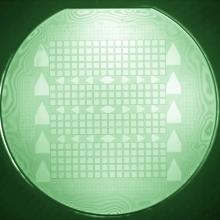
New materials with improved properties are essential for the development of smart components and systems, whereby a distinction can be made between construction materials and functional materials. The Flexible Devices group works on the development and processing of various materials with the aim of establishing new materials for flexible substrates, functional materials in devices and for assembly and connection technologies:
In close cooperation with the Fraunhofer Institute for Electronic Nano Systems ENAS, this includes the development of new applications for parylene, e.g. as an ultra-barrier, adhesive for chip and wafer bonding and for flexible electronics, in order to exploit its unique properties, i.e. biocompatibility, optical transparency, chemical inertness, dielectricity and low permeability for these applications.
In addition, our group is researching the synthesis and application of sensitive materials for applications in chemical sensors and gas sensors. This includes, among other things: highly porous MOFs (metal organic frameworks), which are deposited layer by layer in various structural variants (e.g. HKUST-1, ZiF-8, MIL-53); nanolaminates made of molybdenum sulfide and graphene; and inverse opals, which are produced, for example, as self-assembling layers using the Langmuir-Blodgett process from polystyrene or silicon dioxide particles.
